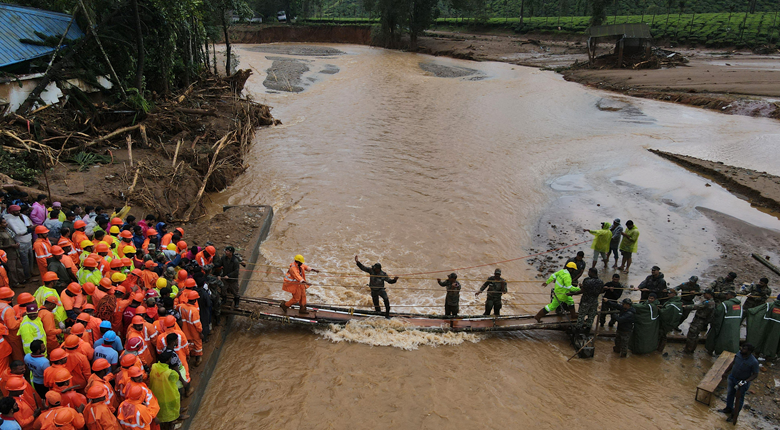Understanding the Increasing Frequency of Landslides: Insights from Kerala’s Wayanad Tragedy

News Mania Desk/Agnibeena Ghosh/1st August 2024
This year has seen a troubling surge in landslides across the globe, with catastrophic events reported in locations as diverse as Yunnan in China and Papua New Guinea. The recent landslide in Wayanad, Kerala, has highlighted the devastating impact of these natural disasters, resulting in over 250 fatalities as people were caught off guard while asleep. Despite not being as widely discussed as other natural disasters such as floods and storms, landslides pose a significant threat to lives and livelihoods, with their frequency and intensity rising due to climate change.
According to a recent study by IIT Madras, landslides account for approximately 8 percent of global landslide-related fatalities, with India alone experiencing 847 deaths and numerous displacements between 2001 and 2021. The institute’s India Landslide Susceptibility Map (ILSM), created using advanced machine learning techniques, reveals that a substantial portion of India is at risk. The map indicates that 13.17 percent of the country is susceptible to landslides, with 4.75 percent in the ‘very high susceptibility’ category. This suggests that previous assessments may have underestimated the extent of landslide-prone areas.
Among the most vulnerable regions, Sikkim stands out with 57.6 percent of its land area categorized as landslide-prone. Kerala, notably outside the Himalayan region, is also highly susceptible, with over 14 percent of its territory in the ‘very high susceptibility’ category. This is a significant finding, as past studies had not fully accounted for the susceptibility of regions such as the Eastern Ghats and Arunachal Pradesh, where extensive areas are now recognized as vulnerable.
Landslides, which occur primarily in steep, mountainous regions, involve the movement of rock, soil, and debris down slopes. The Indian Space Research Organisation (ISRO) has identified several landslide hotspots, including the Himalayas and Western Ghats. The occurrence of landslides is influenced by both conditioning and triggering factors. Conditioning factors include the topography, soil composition, and geomorphology of the area, while triggering factors typically involve intense rainfall and human activities such as deforestation and unregulated construction.
In Kerala, many recent landslides have been linked to agricultural practices. Research by S. Abhilash, director of the Advanced Centre for Atmospheric Radar Research at Cochin University, indicates that landslides in the region are frequently associated with monocropping. Large-scale removal of native trees, which traditionally stabilize the soil, has been replaced by crops with shallower root systems like tea and coffee. This change exacerbates soil erosion and instability.
Abhilash’s studies also highlight the role of extreme rainfall patterns in triggering landslides. For instance, after the deadly landslide in Puthumala in 2019, his research found that intense and prolonged rainfall had created highly vulnerable conditions. Recent heavy rains in Kerala, significantly above normal levels, saturated the topsoil, increasing the risk of landslides. A single day of extremely heavy rainfall, akin to a mini-cloudburst, was a critical factor in the recent disaster.
As Kerala continues to recover from the Wayanad tragedy, it is evident that addressing landslide risk requires a multifaceted approach. This includes improving land use practices, enhancing early warning systems, and investing in research to better understand and mitigate the impacts of these devastating natural events.






